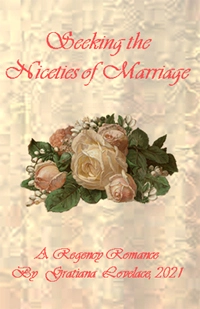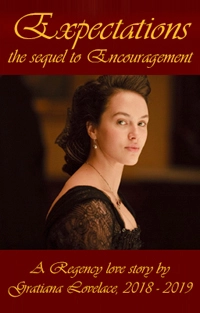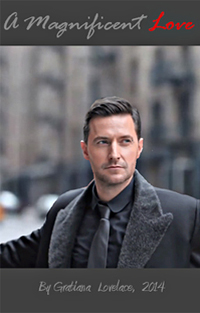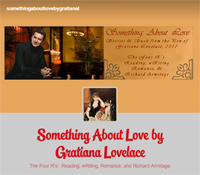 After watching the BBC tv miniseries,” The White Queen” (TWQ, image left), a dramatization that is based on the novel of the same name by Phillipa Gregory–and Gregory’s other books about the Wars of the Roses, “The Red Queen” and “The Kingmaker’s Daughter”–I am struck by the difficulties in perceiving where truth meets fiction, fudges it, or departs from it wholesale. For the purposes of this essay, when I refer to TWQ, I am referencing The White Queen BBC television program–I have not had the time nor the ability to read Philippa Gregory’s book in the last few weeks due to my eyes having a painful
After watching the BBC tv miniseries,” The White Queen” (TWQ, image left), a dramatization that is based on the novel of the same name by Phillipa Gregory–and Gregory’s other books about the Wars of the Roses, “The Red Queen” and “The Kingmaker’s Daughter”–I am struck by the difficulties in perceiving where truth meets fiction, fudges it, or departs from it wholesale. For the purposes of this essay, when I refer to TWQ, I am referencing The White Queen BBC television program–I have not had the time nor the ability to read Philippa Gregory’s book in the last few weeks due to my eyes having a painful  flareup, so I cannot speak to how faithful the program is to the book. But having read and participated in “The Sunne in Splendour” (TSIS) reading group last year as we discussed the TSIS book by Sharon Kay Penman (image right) over a several months period certainly informed, and perhaps biased, my recent viewing of TWQ as it told that tale of the women of the sons of York and Lancaster and their men, the sons of York, Edward, George, and Richard.
flareup, so I cannot speak to how faithful the program is to the book. But having read and participated in “The Sunne in Splendour” (TSIS) reading group last year as we discussed the TSIS book by Sharon Kay Penman (image right) over a several months period certainly informed, and perhaps biased, my recent viewing of TWQ as it told that tale of the women of the sons of York and Lancaster and their men, the sons of York, Edward, George, and Richard.
Add to that, the diatribe about King Richard III (KR3 image right) that was Shakespeare’s  play of a twisted body and soul, The Tragedy of Richard III–of which I will admit to having only a passing familiarity from my Shakespeare class as an English lit minor in college decades ago, and a quick perusal again for this essay–I can see how historians could be twitching in the wind with the misinformation, speculation, and downright fabrication that occurs with fictionalizing and dramatizing history, particularly King Richard III’s story.
play of a twisted body and soul, The Tragedy of Richard III–of which I will admit to having only a passing familiarity from my Shakespeare class as an English lit minor in college decades ago, and a quick perusal again for this essay–I can see how historians could be twitching in the wind with the misinformation, speculation, and downright fabrication that occurs with fictionalizing and dramatizing history, particularly King Richard III’s story.
So, my goal here is to share how my non-academic experience of these dramatic works–in  watching their performance and/or reading texts–along with some more recent Ricardian presentations in the media this past year surrounding the discovery of King Richard III’s body (which I wrote about here, image right of the new bust as compared to a portrait of the British actor Richard Armitage with link to article it appeared in here) and other works, influence my undoubtedly tongue in cheek (*facetious alert*) interpretation of the love matches, alliances, and betrayals of King Richard III.
watching their performance and/or reading texts–along with some more recent Ricardian presentations in the media this past year surrounding the discovery of King Richard III’s body (which I wrote about here, image right of the new bust as compared to a portrait of the British actor Richard Armitage with link to article it appeared in here) and other works, influence my undoubtedly tongue in cheek (*facetious alert*) interpretation of the love matches, alliances, and betrayals of King Richard III.
Love Matches
If one reads or sees Shakespeare’s play The Tragedy of King Richard III or reads the TSIS  book by Sharon Kay Penman, the first impression one gets of Richard of York, Duke of Gloucester, and later King Richard III of England [wallpaper right is a composite of KR3 graphics, Aneurin Barnard’s body as Richard Duke of Gloucester in TWQ and British Actor Richard Armitage’s head as his younger self], is that Richard Duke of Gloucester is a thoroughly randy young man– consistent with men and nobles of his time, or ours–whereas, TWQ paints Richard DofG as a lover only marginally, dispensing with his illegitimate children and past loves.
book by Sharon Kay Penman, the first impression one gets of Richard of York, Duke of Gloucester, and later King Richard III of England [wallpaper right is a composite of KR3 graphics, Aneurin Barnard’s body as Richard Duke of Gloucester in TWQ and British Actor Richard Armitage’s head as his younger self], is that Richard Duke of Gloucester is a thoroughly randy young man– consistent with men and nobles of his time, or ours–whereas, TWQ paints Richard DofG as a lover only marginally, dispensing with his illegitimate children and past loves.
Or as Oscar winner Richard Dreyfus’ character so amusingly put it in Neil Simon’s movie, “The Goodbye Girl” in 1977–as an actor portraying an actor portraying King Richard III in a way off Broadway version of Shakespeare’s Richard III–our contemporary Richard’s character stated that the historical figure Richard III “wanted to hump Lady Anne”. So even decades ago, there was at least one dramatist’s view (Neil Simon’s) that Richard III’s romantic motivations were guiding Richard III’s actions. Hmmm. Or perhaps guiding something else. *wink* And the crude way King Richard III’s lust for Anne as presented above does not betoken real love. In Shakespeare’s Richard III, the goal of Richard Duke of Gloucester in marrying Lady Anne Neville seems to have little to do with love and everything to do with power and position (and chillingly quoted below from the play):
“I’ll marry Warwick’s youngest daughter.
What, though I kill’d her husband and her father?”
Yet, the more florid telling–for lack of a better word, and I like puns *wink*–of the Wars of the Roses in Penman’s TSIS, gives us a Richard Plantagenet of York and Duke of Gloucester, nicknamed Dickon in his childhood to no doubt distinguish him from other Richards in the family, who develops a gradual love for the several years younger Lady Anne Neville due to their shared childhood in her father’s home at Warwick Castle, where he grew to manhood under her father his cousin Richard Neville, Earl of Warwick’s care. Heck! The young Lady Anne Neville even named Dickon’s alaunt breed of dog (think really big irish wolf hound), Gareth. And men always fall in love with women–or girls–who like their dogs. Right? Ha!
“Anne was part of his [Richard Duke of Gloucester’s] life; nothing could change that. Had Edward [King Edward IV] not forbidden a betrothal, he’d have been quite willing to plight troth with Anne, as Warwick wanted. But he couldn’t bring himself to pay Warwick’s price. He consoled himself as best he could with the thought that Anne was very young yet; by the time she was of marriageable age, perhaps circumstances would be different. He’d made a halting attempt to talk to Edward about it, sought some sort of assurance from his brother that he might reconsider the match at a later date. Edward had been irked, but Richard had persevered and finally won from Edward a grudging concession, an adamant “No” softened into a “We’ll see.”” Penman, Sharon Kay (2008-01-22). The Sunne In Splendour: A Novel of Richard III (p. 127). Macmillan. Kindle Edition.
And later, after Lady Anne Neville had been wedded and bedded to the now slain Prince Edward of Lancaster, Richard still wanted her–he always wanted Lady Anne for his wife. And in Richard Duke of Gloucester subsequently rescuing Lady Anne Neville from his brother George Duke of Clarence’s scheming to steal her fortune by either spiriting her away to a nunnery (per TWA) or killing her (TSIS), he tells a serving girl where he believes that Anne is hiding of his kindly intent toward Anne so that he may be lead to her:
“She’s [Lady Anne Neville] very dear to me; I’d never cause her hurt.” Penman, Sharon Kay (2008-01-22). The Sunne In Splendour: A Novel of Richard III (pp. 469-470). Macmillan. Kindle Edition.
TSIS tells a beautiful tale of Richard Duke of Gloucester (known as Dickon) loving and wanting to protect his childhood love, Lady Anne Neville. Richard is disappointed, but resigned when Lady Anne’s father Richard Neville, Earl of Warwick marries her off to their enemy, the Lancastrian heir Prince Edward of Westminster, son of Margaret of Anjou who is in exile in France. Lady Anne’s first marital experience is best forgot as portrayed in TSIS and TWQ–love was not in evidence. And yet, Richard Plantagenet, Duke of Gloucester (DofG) would have no other for his wife but his childhood sweetheart, the Lady Anne. Richard woos her. The tender courtship of Anne by Dickon leading up to their marriage as enchantingly told by TSIS–is one of restoring Anne to a place where the degradations of sex she experienced with her first husband Prince Edward, son of King Henry VI, are banished by the respectful and loving joy that she eventually comes to know with her intended second husband, Richard Duke of Gloucester [image below right is from TWQ FB, TWQ episode7–Aneurin Barnard and Faye Marsay] :
“Hold me,” she [Lady Anne] entreated. “Just hold me.”
“He [Richard DofG] was more than willing to do that. He kissed her again, very gently this time, but her mouth clung to his, sought a deeper kiss. If only he’d never let her go to the Herber! If only he hadn’t had to go North for Ned. He tightened his arms around her. Never had she kissed him like this; he was both surprised and delighted by the unexpected ardor of her response. This was the first time that he’d taken her in his arms and felt them both free of the shadow of Lancaster. Her lashes lifted, giving him a glimpse of lucent liquid darkness. A man could drown in eyes like hers, he thought, and then laughed at his own foolishness. She laughed, too, for no other reason than that he did. “Don’t let me go,” she said. “Not ever,” and he laughed again, thinking, so easy it is as this, then, to exorcise a ghost!” Penman, Sharon Kay (2008-01-22). The Sunne In Splendour: A Novel of Richard III (p. 470). Macmillan. Kindle Edition.
Well, maybe not so easy. Richard Duke of Gloucester waits and bides his time after his older brother George’s Duke of Clarence machinations to usurp the Lady Anne’s inheritance of vast land holdings and wealth as the daughter with her sister Isabel (who is married to George). One fly in the ointment there, the Warwick daughters’–Lady Isabel and Lady Anne– their mother Countess of Warwick is not dead, but in sanctuary. Where TSIS portrays the delay in Anne and Richard’s marriage due to Richard DofG wanting to preserve Lady Anne Neville’s birthright inheritance and not let his brother George Duke of Clarence steal it from her, TWQ portrays Richard’s motives and Anne’s as being a bit more mercenary in both not wanting to lose the wealth that is but a heart beat away from them. Cynical? Yes. And also by contrast, TWQ paints Lady Anne as a stronger woman than TSIS does–who though ordered to be passive in her first marriage bed becomes a willing and eager participant in she and Richard’s lovemaking.
And yet, Dickon/Richard as a teenager had been separated from Lady Anne while her father the Earl of Warwick is intermittently on the outs with King Edward (see alliances section). So Richard DofG as a lusty teenage young man–battle commander to his brother Kind Edward who cornered the market on lust per TSIS and TWQ–Dickon is consoled by the love of at least two women who each bore him one child out of wedlock–the bastards Johnny and Kathryn. To his credit, according to TSIS, Richard/Dickon supported his children’s mothers and recognized his children to the extent that they were included in his family life and he tried to see to their futures. Richard behaved as honorably as his time  allowed toward these women and their shared children–except he did not marry these commoners–because whom Richard Duke of Goucester would marry held great import for his brother King Edward’s management of England. And frankly, having been brought up as the son of a royal duke–his father Richard Plantagenet of York, yes, another Richard–Richard Plantagenet his son, the royal Duke of Gloucester would have been well schooled in his duty to his family in marrying well–and also the benefits to be derived to himself by marrying well. And just in case you are having trouble keeping track of everyone in the marriage and family game among the Yorks and the Lancasters, here is a handy family lineage chart at right [from TWQ on Facebook].
allowed toward these women and their shared children–except he did not marry these commoners–because whom Richard Duke of Goucester would marry held great import for his brother King Edward’s management of England. And frankly, having been brought up as the son of a royal duke–his father Richard Plantagenet of York, yes, another Richard–Richard Plantagenet his son, the royal Duke of Gloucester would have been well schooled in his duty to his family in marrying well–and also the benefits to be derived to himself by marrying well. And just in case you are having trouble keeping track of everyone in the marriage and family game among the Yorks and the Lancasters, here is a handy family lineage chart at right [from TWQ on Facebook].
And in TWQ, during King Richard III’s wife Queen Anne’s illness and subsequent death, he supposedly courts his niece, his late brother King Edward’s daughter, Princess Elizabeth of York. All I can say to that is ewwww! It is one thing to request a papal dispensation to marry one’s cousin–Anne and Richard were cousins, but it was unclear whether they had the papal dispensation in place when they married–it is quite another to marry yet a closer blood bond of one’s niece. TWQ portrayed the relationship of King Richard III and his niece Princess Elizabeth of York as a very close one–supposedly as strategy on his part to undermine the position of Lady Margaret Beaufort Stanley’s son Henry Tudor by intentionally seeming to cuckold him with Henry Tudor’s betrothed Princess Elizabeth of York.
And yet, Penman in TSIS also portrayed a close affinity between Uncle King Richard III and his niece Princess Elizabeth of York–but only a one way yearning, on the part of Princess Elizabeth for her Uncle Richard, as a transferred affection to him as a father figure. And yet, Princess Elizabeth’s grief upon losing a cherished memento from her Uncle King Richard III, a written note to her (Penman’s fiction, not a real letter from King Richard III to Princess Elizabeth) betrays her deeper feelings:
“Dearest Bess, I’ve had time this summer to consider all that happened, and I think I do understand now how you and I found ourselves in such a coil. Grieving takes many guises, lass. We’d never accepted Ned’s death, either of us, sought to find him in each other. I truly believe…” Penman, Sharon Kay (2008-01-22). The Sunne In Splendour: A Novel of Richard III (pp. 913-914). Macmillan. Kindle Edition.
Grief because Princess Elizabeth had to cast the cherished note from her Uncle Richard into the fire to prevent her soon to be husband King Henry Tudor from reading it–and she was full of anguish for it and the loss of so many whom she loved:
“He [King Henry Tudor] was not a man to let his emotions show. “I think, Bess, that it be time we talked about what there was between you and your uncle.” Only in the heavy stress laid upon the word uncle did he reveal the extent of his anger. “I have consented to be your wife, Henry. I want no more war, no more killing, will do what I can to reconcile Yorkist and Lancastrian loyalties. I will do all that is expected of a wife, of a Queen, and God willing, I will give you sons. But there is one thing I will not do. I will not discuss Richard of Gloucester with you… not now, not ever.” Penman, Sharon Kay (2008-01-22). The Sunne In Splendour: A Novel of Richard III (p. 914). Macmillan. Kindle Edition.
However, so much was rumored about King Richard III and Princess Elizabeth’s  relationship (image right from TWQ FB–Aneurin Barnard and Freya Mavor), that KR3 felt honor bound to deny the rumors of their having secret assignations as the historical records tell–and both TWQ and TSIS refer to:
relationship (image right from TWQ FB–Aneurin Barnard and Freya Mavor), that KR3 felt honor bound to deny the rumors of their having secret assignations as the historical records tell–and both TWQ and TSIS refer to:
“The choice is not yours to make, Bess. If you are to be my wife, I [King Henry Tudor] have the right to know the nature of the bond between you. You’d not deny that I have reason enough for doubts. The rumors linking your name with Gloucester’s were such that he felt the need to make an unprecedented public denial. I heard it said at the French court that he would have married you if he dared, that he—” “You heard wrong,” she [Princess Elizabeth] snapped. “Dickon loved but one woman in his life.” [She refers to KR3’s late wife Queen Anne.] “I was not that woman.” Penman, Sharon Kay (2008-01-22). The Sunne In Splendour: A Novel of Richard III (p. 914). Macmillan. Kindle Edition.
Princess Elizabeth of York was her late Uncle King Richard III’s niece, her father the late King Edward IV’s daughter, and she would go on to marry King HenryVII, of the Lancastrian Tudor line to heal the York and Lancaster schisms. And her son King Henry the VIII and her granddaughter Queen Elizabeth I would rule England.
[An aside, I love my Kindle for PC software–which is where I store my electronic books such as TSIS–not in small part because it is so easy to navigate to favorite passages that I have bookmarked for rereading and for sharing in essays such as this one. Snap!]
Aliances–gone wrong
Noble marriages of several eras were not usually about love. It is only in our recent times when princes and princesses have married commoners for love. Long live the Duchess of Cambridge and future Queen of England, Catherine Middleton! In the time of King Richard III, noble marriages were state craft–a way to create and cement alliances between families and often between nations. The feelings of the parties involved–least of all the woman’s feelings–were not paramount. We saw this heartbreakingly so in Lady Anne’s loveless first marriage to Prince Edward of Lancaster in one of her father Richard Neville Earl of Warwick’s many attempts to put another king on England’s throne–a king whom Warwick thought he could control and manipulate.
Family, you can’t live with them, and you can’t always exile them and be certain that they won’t come back to fester like a boil on your backside. Such was the case with Richard Neville Earl of Warwick–cousin to King Edward IV, and his brothers George Duke of Clarence and Richard Duke of Gloucester. The Kingmaker, Richard Earl of Warwick–tried to maneuver Dickon’s brother King Edward IV off the throne by putting his brother George Duke of Clarence in his place and who was conveniently married to the Earl’s daughter Lady Isabel Neville. And earlier, the Earl also wanted to marry his daughter Anne to Richard, Duke of Gloucester. So two royal dukes in George and Richard would be married to two daughters of the Earl? Not so fast. King Edward IV was convinced by his wife, Queen Elizabeth Woodville to oppose the marriage matches in both TSIS and TWQ. Her reason being that these alliances would bestow even more power and wealth into the hands of Richard Earl of Warwick the Kingmaker and make him a trouble maker. More about that in betrayals in the next section below.
Other alliances that impacted and threatened the House of York’s position on the throne–and ultimately Richard III’s claim as king–involved the pesky Lancastrian Tudors in the person of Lady Margaret Beaufort de la Pole Tudor Stafford Stanley –the lady got around. And she was not averse to furthering the cause of her son Henry Tudor by Edmund Tudor as the King of England. Would that the lady could have married her love Jasper Tudor–her son’s father’s brother–and been able to focus on making lots of little Tudor babies to keep her occupied. As it was, Henry Tudor was hers and hers alone.
Ultimately, the marital alliances gamesmanship during the Wars of the Roses between the House of York (white rose emblem  ) and the House of Lancaster (red rose emblem
) and the House of Lancaster (red rose emblem  ) was a tangled web of intermarriages of warring factions which proved to be of varying degrees of success and happiness: a true love match (such as King Edward IV and Queen Elizabeth), thwarted or delayed marriages that were a true love match (such as Richard’s and Anne’s), and unhappy marriages that did not have much love in them (such as George and Isabel, and most of Lady Margaret’s unions).
) was a tangled web of intermarriages of warring factions which proved to be of varying degrees of success and happiness: a true love match (such as King Edward IV and Queen Elizabeth), thwarted or delayed marriages that were a true love match (such as Richard’s and Anne’s), and unhappy marriages that did not have much love in them (such as George and Isabel, and most of Lady Margaret’s unions).
Betrayals
By King Edward IV becoming his own man and his own king–disregarding and foolishly disrespecting his kinsman kingmaker Richard Neville Earl of Warwick–it insured that the king maker was ever the trouble maker. When the Earl of Warwick wanted his two daughters to marry the two royal dukes–George Duke of Clarence for Lady Isabel and Richard Duke of Gloucester for Lady Anne–King Edward’s refusal forever shut the door on a peaceful future. King Edward trying not to make the Earl of Warwick powerful early in his reign–at the behest of his wife Queen Elizabeth–insured that the seeds of betrayal were sewn. And these seeds of a warring House of York would forever effect King Edward’s successor–his brother, King Richard III.
The three sons of York [TWQ image right of David Oakes as George, Max Irons as  Edward, and Anuerin Barnard as Richard] became forever divided from each other as they grew older, wiser, more suspicious, and more greedy (especially George Duke of Clarence). And in the end, Richard Neville Earl of Warwick’s maneuverings to get his son-in-law George Duke of Clarence on the throne assisted in inflating George’s opinion of himself–along with a little bit of George’s madness. George Duke of Clarence finally landed himself in the Tower of London jail and his drunken ramblings there let on that he knew a secret that could bring his brother King Edward IV’s family dynasty down–so George Duke of Clarence was put to death and drowned in a vat of malmsey wine as the tale goes. Ewwww again!
Edward, and Anuerin Barnard as Richard] became forever divided from each other as they grew older, wiser, more suspicious, and more greedy (especially George Duke of Clarence). And in the end, Richard Neville Earl of Warwick’s maneuverings to get his son-in-law George Duke of Clarence on the throne assisted in inflating George’s opinion of himself–along with a little bit of George’s madness. George Duke of Clarence finally landed himself in the Tower of London jail and his drunken ramblings there let on that he knew a secret that could bring his brother King Edward IV’s family dynasty down–so George Duke of Clarence was put to death and drowned in a vat of malmsey wine as the tale goes. Ewwww again!
But if George’s death was a defensive strategy on the part of his brother King Edward IV, why didn’t King Edward IV go the whole way and silence all of the potential revealers of his damaging secret? TSIS made much mention of a Bishop Robert Stillington–whereas in TWQ, Stillington was merely a blip. That lapse would come back to haunt his widow Queen Elizabeth, doom their children, and forever damn the reputation of King Richard III. To me, the Yorks seemed like a dynasty with too many heads–each pulling for their own self to lead. That is, except for Richard Duke of Gloucester–until the very end, when he removed his late brother King Edward IV’s son Edward from the throne in June of 1483 by proclaiming King Edward IV’s marriage invalid–and later confirmed that pronouncement via the Titulus Regius in January 1484–due to the claim of a prior plight troth marriage to a Nell/Eleanor Butler–and Edward’s children became bastards.
By deposing his nephew King Edward V–whom Richard Duke of Gloucester swore allegiance to on his brother King Edward IV’s death bed–and putting himself on the throne sounds cold hearted at the least. And some might certainly see it as the then Richard Duke of Gloucester’s betrayal upon his family. Shakespeare’s play The Tragedy of Richard III puts Richard Duke of Gloucester squarely in the cloying for power grab camp. TWQ also gives a decided machiavellian shift to the Richard Duke of Gloucester character when his characterization portrayed by Aneurin Barnard slowly shifts from unimpeachable honorable man to one whose actions increasingly bear more scrutiny. However, unlike the Shakespeare play, TWQ clearly posits that King Richard III did not kill his nephews in the tower–King Edward V and his brother Richard, their uncle’s namesake.
Similarly, Penman’s The Sunne in Splendour (TSIS) book departs from TWQ and Shakespeare’s Richard III play by portraying Richard Duke of Gloucester solidly as ever faithful to his wife, ever loyal to his brother King Edward IV on the battlefield of war or politics, and ever the guardian of his family–including the princes in the tower. How could one kill one’s own flesh and blood–let alone a child named after you as young Prince Richard also called Dickon was? King Richard III tragically made the mistake in trusting in the loyalty of his kinsmen–such as the aforementioned now grown Henry Stafford, Duke of Buckingham and husband to Queen Elizabeth Woodville’s sister Katherine. It turns out that the earlier marrying the then child Lady Katherine Woodville–Queen Elizabeth’s younger sister–to the then boy heir to the Duke of Buckingham was merely a means to ally families, with devastating consequences for Queen Elizabeth’s two boys in tower–since the later grown up Henry Stafford Duke of Buckingham was thought to have orchestrated the deadly deed. And ultimately, it was Buckingham, Lady Margaret Beaufort’s 4th husband Lord Thomas Stanley, and others who betrayed King Richard III by siding with the Lancaster faction supporting Henry Tudor for the throne of England.
Sadly, the York and Plantagenet dynasties died on August 22, 1485 when King Richard III was slain in the Battle of Bosworth Field. Knocked from his horse, he was left to fight on foot in heavy armor–he never had a chance. And his last appeal “A horse! A horse! My kingdom for a horse!” quoted from the Shakespeare play about Richard III went unanswered. At two months shy of 33 years old at the time of his death, King Richard III had accomplished much, he had: fought in wars to keep his brother King Edward IV on the throne and peace in the land, married the love of his life in Lady Anne Neville, was a grieving father for his and Anne’s son Edward of Middleham Prince of Wales who died at the tender age of ten, tried to keep England from war after his brother died by ascending the throne only to see others’ ambitions thwart all his best efforts to be a good king.
Conclusion
As I stated at the outset of this essay, my musings here upon the dramatized and fictionalized historical King Richard III–primarily through my viewing The White Queen and reading The Sunne in Splendour–are just my perceptions as an audience member and are undoubtedly flawed and incomplete, certainly not a scholarly nor academic take on the character of King Richard III. So once again, please take what I have written here with a very large grain of salt. But my knowing that there are conflicting historical records–not inconsequentially due to the victors, in this case the Tudors, writing history to serve their own purposes–motivates me to learn all that I can about King Richard III from a variety of sources and texts. I have barely scratched the surface in my essay here detailing my own quest for greater understanding about King Richard III. But like myself, I hope that this scratch, might be evident of a growing itch in you to learn more about King Richard III.

Et Cetera
And I have to close with one of my favorite drawings with Richard Armitage as King Richard III by GizTheGunslinger (right). The detail on her portrait is spectacular! So be sure to follow the link to her site for a larger view.
 The King Richard Armitage initiative [image left]–which is a fan based effort supporting the British actor Richard Armitage’s often stated goal of bringing a new biopic of King Richard III to the screen that will correct the historical record about KR3’s person and kingship–helps with this goal enormously by providing links to resources and essays about the historical King Richard III.
The King Richard Armitage initiative [image left]–which is a fan based effort supporting the British actor Richard Armitage’s often stated goal of bringing a new biopic of King Richard III to the screen that will correct the historical record about KR3’s person and kingship–helps with this goal enormously by providing links to resources and essays about the historical King Richard III.
And if you feel so inclined, go over to the King Richard Armitage page and click on the link to sign the petition reflecting Richard Armitage fan interest in the KR3 project he hopes to initiate one day. And please don’t forget to visit the other King Richard Armitage Week 2013 links for other bloggers’ essays.

P.S. Completely off topic, but if you have read/slogged this far–over 4,300 words–you won’t mind me celebrating a small hurrah here for my little blog’s 2nd blogiversay. I am immeasurably grateful to my Richard Armitage fan friends for their support and encouragement. And my grateful thanks also flow to the over 201,000 visitors to my blog in these past two years! There are repeat visitors in that number, but I haven’t paid WordPress to find out the really detailed stats about my visitors. Ha! I am content and feel blessed just to have you visiting here and reading what I have to say in my stories and essays in the first place. And I am thrilled that you read not only my new essays  and stories, but you also reread my previous essays and stories–with my “North & South: Nurturing Love” story (click here for general link to images in logo)–based on the 2004 BBC dramatization of North & South starring the exquisitely talented Richard Armitage portraying John Thornton and based on the timeless 1855 Elizabeth Gaskell novel North & South –still taking the champion’s spot as the fan favorite of all of my stories that I have shared with you. I’ll have to post it on my Gratiana Lovelace Wattpad story site soon. But in the meantime, here are two graphics that detail the top fifteen posts during the second year of my blog (below left) and then for all time (below right):
and stories, but you also reread my previous essays and stories–with my “North & South: Nurturing Love” story (click here for general link to images in logo)–based on the 2004 BBC dramatization of North & South starring the exquisitely talented Richard Armitage portraying John Thornton and based on the timeless 1855 Elizabeth Gaskell novel North & South –still taking the champion’s spot as the fan favorite of all of my stories that I have shared with you. I’ll have to post it on my Gratiana Lovelace Wattpad story site soon. But in the meantime, here are two graphics that detail the top fifteen posts during the second year of my blog (below left) and then for all time (below right):
Thank you from the bottom of my heart for your support and encouragement! Cheers! Grati ;->
















































Congrats Grati on your two year blogiversay. Today is my 2 month blogivesary so I appreciate how much time,dedication and hard work went into your achievement, If you haven’t read it yet, I think you would love Josephine Tey’s mystery, “the Daughters of Time”. It treats the killing of the nephews in the tower as a murder mystery.
I also recommend “The Last Plantagenets” by Thomas B. Costain,for non-fiction. Actually the entire four book series,”The Pagaent of England” is very readable.
So, it seems you’ve come out on the side of Richard’s true love for Anne.
LikeLiked by 1 person
Hi Perry,
Thanks for your nice note! And congratulations on your own blogiversary! And thanks for the reading tips! I will look into them.
I also own the following print editions to read as well, Ha!:
“The Kingmaker’s Daughter” by AnneEasterSmith
“The Red Queen” by Philippa
And for my Kindle, “Loyalty” by Matthew Lewis (I came upon this title by accident. Then I see that CDoart has interviewed him about his book for KRA Week 2013! So I am eager to read the book!)
And for my Middle Ages reading pleasure:
“Cruel as the Grave” by Sharon Kay Penman
Thanks for visiting and commenting! Cheers! Grati ;->
P.S. And Readers, be sure to visit Perry’s blog called Armitage Agonistes and also give her some blogiversary love! Her blog link is:
http://armitageagonistes.wordpress.com/
And I will be adding her blog link to my blogroll in my sidebar at right. Snap!
LikeLike
All the best wishes to your 2nd bloggiversary, Grati!
LikeLiked by 1 person
Thanks, Ania!
LikeLike
Congratulations on your blogiversary!
LikeLiked by 1 person
Thanks, Servetus!
LikeLike
August 25, 2013–Thanks to Fanny @sinjoor for pointing out that in my first paragraph, I had omitted the third book that the BBC One The White Queen series is based on–The Kingmaker’s Daughter (about Lady Anne Neville). I corrected that above.
Here is a link for more about the TWQ dramatisation:
http://en.wikipedia.org/wiki/The_White_Queen_%28TV_series%29
LikeLike
Hi Grati, how are you doing?
Congrats on your 2nd blogiversary, and many more to come! Great essay on fictional King Richard III. I’m slowly making my way through TSIS, it’s an intrincate story, many characters share the same name and it’s full of new vocabulary, but totally worth reading.
LikeLiked by 1 person
Hi Fabi!
I’m great! And you! Thanks for your congratulations and nice note about my essay! I loved reading TSIS, too! Penman really makes the characters and history come alive. Enjoy!
Cheers! Grati ;->
LikeLike
Congrats on your second blogiversary! I have enjoyed reading your stories.
LikeLiked by 1 person
Hi Katie70,
Thanks for your congrats and your kind note about liking my stories!
Cheers! Grati ;->
LikeLike
August 26, 2013–Judiang at the “Confessions of a Watcher” blog, gives us a crash course in the life and times of King Richard III:
http://www.jagrant.com/watcher/richard-iii-for-dummies-us-edition/
LikeLike
Congrats on your second blogversary! Keep up the good work. :)
LikeLiked by 1 person
Hi Judiang,
Thanks for your kind note!
Cheers! Grati ;->
LikeLike
August 28, 2013–Huff Post reveals that finding KR3 intact almost didn’t happen
http://www.huffingtonpost.com/2013/08/28/richard-iii-skeleton-disturbance_n_3826816.html?ncid=txtlnkushpmg00000034&ts=1377712753
LikeLike
August 28, 2013–Fabo Laktuko of “White Rose: Sincere and Simple Thoughts” blog has a great KRA Week 2013 post about several different King Richard III actors and their dramatisations at:
http://whiterosewritings.blogspot.com/2013/08/richard-iii-gets-makeover-and-catch-up.html
Be sure to check her essay out.
P.S. I particularly like the spoof video that she shares at the end:
LikeLike
Pingback: Richard Armitage Legend 94: Stuff worth reading | Me + Richard Armitage
Congrats on your blogiversary, Grati!! *hugs*
LikeLiked by 1 person
Hi Itsy! Thanks so much! Cheers! Grati ;->
LikeLike
Congratulations on your blogiversary :)
LikeLiked by 1 person
Thanks Faboamanto!
LikeLike
Huge congrats on your blogiversary! And many more…. ;)
LikeLiked by 1 person
Thanks AgzyM!
LikeLike
August 26, 2016–Thanks for earlier and today liking this post! I’m glad that you enjoyed it! Cheers! Grati ;->
Fanny, ania- zrysiowana ja, and Ruth
LikeLike